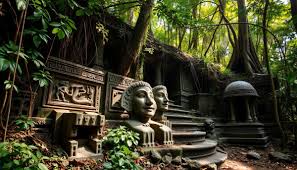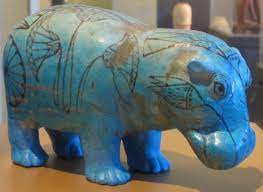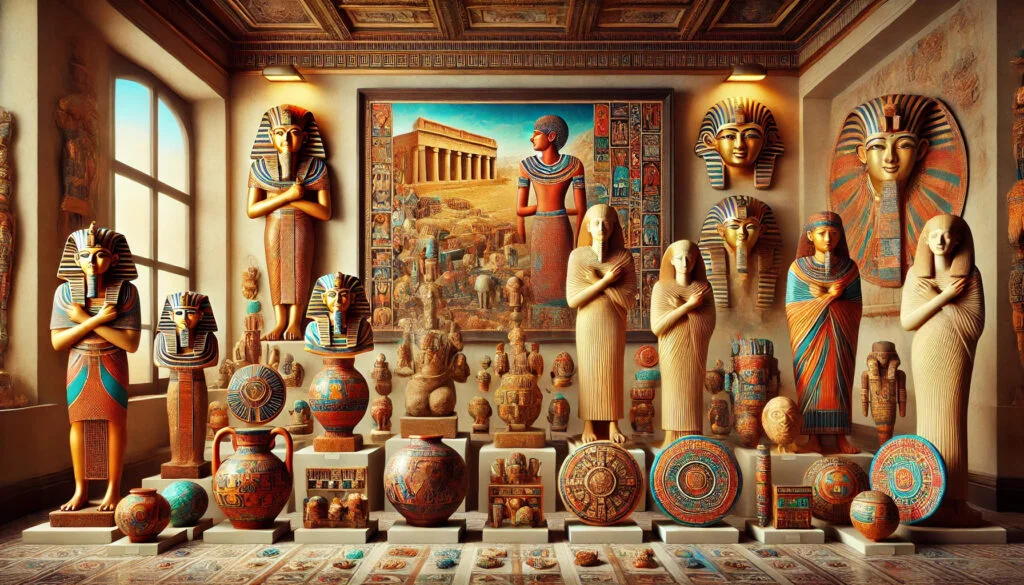Table of Contents
- Introduction to Ancient Artz
- The Importance of Preserving Ancient Artz
- Common Themes and Techniques in Ancient Art
- Mesopotamian Art: Exploring the Cradle of Civilization
- Egyptian Art: A Window into a Fascinating Culture
- Greek and Roman Art: From Mythology to Reality
- Asian Art: The Intricate and Timeless Beauty of the East
- The Legacy of Ancient Art in Modern Society
- How to Experience
- FAQs:
Introduction to Ancient Artz
Ancient Artz: Enter a realm where mortality has no leg to stand on, and tales are chiseled on rocks.
Aesthetic art captures our attention to the scope of time and the human invention of ages past.
From romanticized carvings with melodies of obscure peoples to colorful murals reviving the legends of epochs long past, each brings us closer to the feeling of its time.
As we turn the pages of this beautiful tale, we appreciate our ancestors’ aesthetic creations and learn about their aspirations and the world in which they lived.
Before that, let’s focus on the current discussion topic: why these masterpieces must be protected and preserved for future generations.
So get ready with your virtual passport and let’s dive into the cultures and eras, reveling in the astonishing elegance of ancient artz.
The Importance of Preserving Ancient Artz

In the modern age, where technology is growing exponentially, preserving ancient artz becomes evermore important.
These artworks bear witness to civilizations, ideologies, and hierarchies that once flourished. Every piece tells a narrative about the people who handcrafted it.
With time, ancient artz has proven to link the past and present. It allows us to forge connections with our forefathers and acknowledges their intelligence and hardships.
Because of preservation efforts, we know that our descendants will be able to admire these works of art.
Moreover, ancient artz also promotes self-worth and vision. Whenever artistic recognition is received, the communities celebrate their origins. By doing this, ties in the society get stronger.
Last but not least, the complete protection of these artworks also serves education and research purposes.
These artz’s impact is valuable for today as they can enrich present-day practices across various industries.
Common Themes and Techniques in Ancient Art

The art ethos of ancient empires was often in line with their philosophy.
Spirituality, nature, and everyday life were recurrent themes, and the artists combined these aspects to address their audience.
Ancient art relied heavily on symbolism. All objects, including colors and shapes, were assigned meaning, which enabled the audience to grasp the meaning of more essential aspects.
For instance, blue may represent water and also God.
Cultural and chronological differentiation of arts and crafts mainly included complex 3D artwork or painted pictures.
Sculptors exquisitely carved rock or clay to produce life models that are still visible today.
However, it was essential to consider the graphics and content in the story’s scenes. People arranged elements in space and told stories around them.
The same cultural influences also grew together during development.
Thanks to the trade routes, civilizations participated in the exchange of styles and methods, which helps us appreciate the ancient arts more nowadays.
Mesopotamian Art: Exploring the Cradle of Civilization
Mesopotamian Art: Insights into the Cradle of Civilisation Art. Religion.
This Art form existed around 3500 BC and represents an advancement in urbanization.
The region’s artworks include figurines, clay pots, and paintings carved into stone slabs.
Most artists depict imaginary beings [as the principles of their faiths] within their works.
The structures of ziggurats were archetypes of art and places of worship.
Clay and stone were the primary materials, as they were easily accessible.
The creation methods differed; some were straightforward engravings, while others were vivid paintings on the walls of the respective buildings.
Every object represents the different activities and social organization of the people who lived in Mesopotamia.
Archaeologists uncover fantastic richness in the objects of known societies.
Detail is not merely of art but of functionality and harmony between the two.
From insignia on cylinder seals as possessive markers to gigantic figures of the rulers, all these artifacts can be relevant to humanity’s endeavors in this particular period.
Mesopotamia, one of the cradle cities of humanity’s civilizations, produced several artistic pieces that testify to the growth of creativity in the early times.
Egyptian Art: A Window into a Fascinating Culture
Art Egyptian can be termed a visual door that opens one’s reality to a vast ancient civilization rich in history and tradition.
This kind of art includes but is not limited to, bright colors, detail, and more, even using images to convey ideas to people.
This not only added beauty but also greatly enhanced their nation’s religious and political charisma.
In sculptures, human beings always represented deities, thus strengthening the ruling power with divine powers.
Order is an essential quality inherent in Egyptian civilization, as evidenced by the strict proportions in such works of art.
Remarkably, ancient Egyptian artisans worked with various materials, including stone, wood, and metal.
Their great-quality handwork enabled several artifacts to survive for thousands of years and gave the people on the Nile a glimpse of daily life.
Everyone urges the audience to consider the values emanating from the customs of this unique civilization, which lived centuries ago.
Greek and Roman Art: From Mythology to Reality
Greek and Roman art provides an exciting interaction over the definition of mythology and reality.
In the magnificent sculptures, the Greeks created even their gods, who ideally were beautiful, simple in even emotions.
of David or the bust of some Temple’s figures.
Also, Romans embraced such ideals by taking them a step further with their art.
Realness was a big issue. Portraits portrayed old, haggard faces with deep traces, depicting not only one’s beauty but also one’s whole essence.
This progression shows a society that could be individualistic and a group.
In ancient Rome, walls were embellished with frescoes portraying anything from mundane scenes to great wars.
These images and paintings connected with viewers by pulling them into a story.
Both cultures also shaped the history of architecture, including the towering Parthenon and the mighty Colosseum, with seamless melds of engineering and artistic conception.
Their testament continues even today and influences the art of the artists.
Asian Art: The Intricate and Timeless Beauty of the East
Asian art combines culture, philosophy, and traditions worth discussing. Every era in history has its legends carved into it.
The artwork, from the graceful brushstrokes of Chinese ink paintings to the mesmerizing knots of Indian textiles, makes one ponder.
Japanese artistry of woodblock prints provides stunning images of nature.
They pinch the moment’s beauty, images like beautiful blooming cherry trees or serene moonlight landscapes. Humans feel their existing connection with nature.
Temple sculptures in Southeast Asia express the spirit and faith of the person.
They are believed to depict the gods and many mythological beasts handcrafted out of wood or stone, showing the great depths of religion.
Asian art forms also show diversity with a timeless obscenity.
Each artwork touches on emotional levels and adds meaning that inspires the audience to explore the known and yet unknown worlds through the art lens.
The Legacy of Ancient Art in Modern Society
Ancient Artz is essential to contemporary art practices. Artists were, are, and will continue drawing from the symbolism and techniques of their predecessors, who were of this period.
Architecture is one such area with this legacy.
Several structures today, such as columns and carvings, can be said to have been influenced by the majesty of the buildings that existed centuries ago.
Similar aesthetics can be noted in fashion as well.
Designers often incorporate motifs about ancient Egyptian or Greek patterns into their creations, and such pieces tell a story.
Further, many countries’ museums house such creations.
They promote cultural understanding and connect the public to historical events.
Similarly, new opportunities appear in the case of ancient art in the form of digital exposure and social net promotion.
This way, young people can be brought to the topics of culture and history.
The motives raised in ancient art reflect ideas still relevant to today’s society, namely identity, conflict, and beauty.
How to Experience
History holds many mysteries and stories that thousands are eager to learn about.
One way to gain insight into this hidden world is to contact an art advisor and view beautiful ancient art collections.
Ancient art is often referred to as artifacts of civilization and contains the culture and values of the society within it.
Sometimes, it requires an entire journey to contact an appropriate art dealer or advisor to acquire such an artwork.
Technological advancements have made this process much more accessible, allowing people to view ancient art collections and experience stunning designs.
FAQs:
What is Ancient Artz?
Ancient Artz refers to the artistic creations of past civilizations, including sculptures and paintings.
How does Mesopotamian art exemplify Ancient Artz?
It features figurines and ziggurat carvings that reflect beliefs and social structure.
What materials were used in Ancient Artz?
Artists commonly used clay, stone, wood, and metal.
What role did religion play in Ancient Artz?
Religion-inspired artworks depicting gods and rituals reflecting cultural values.
How can one experience Ancient Artz today?
By visiting museums and exploring digital archives and cultural programs.



